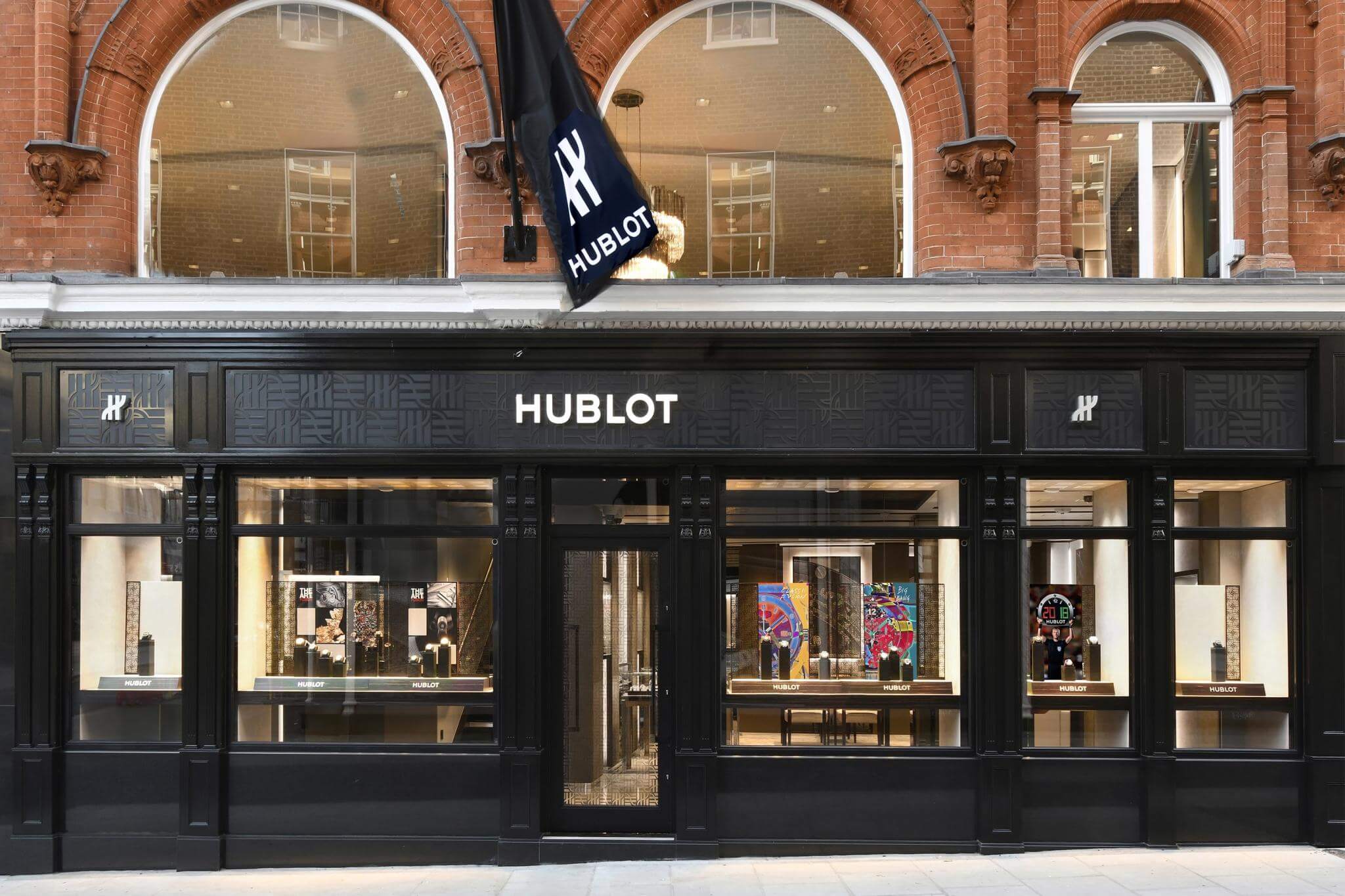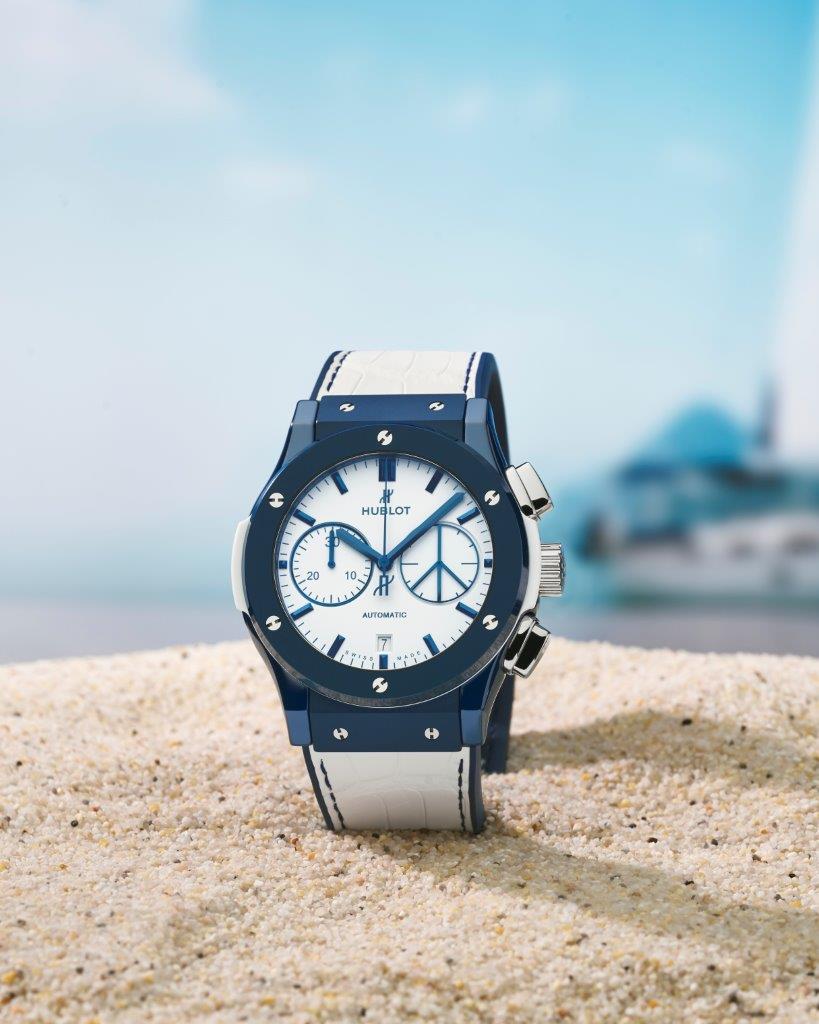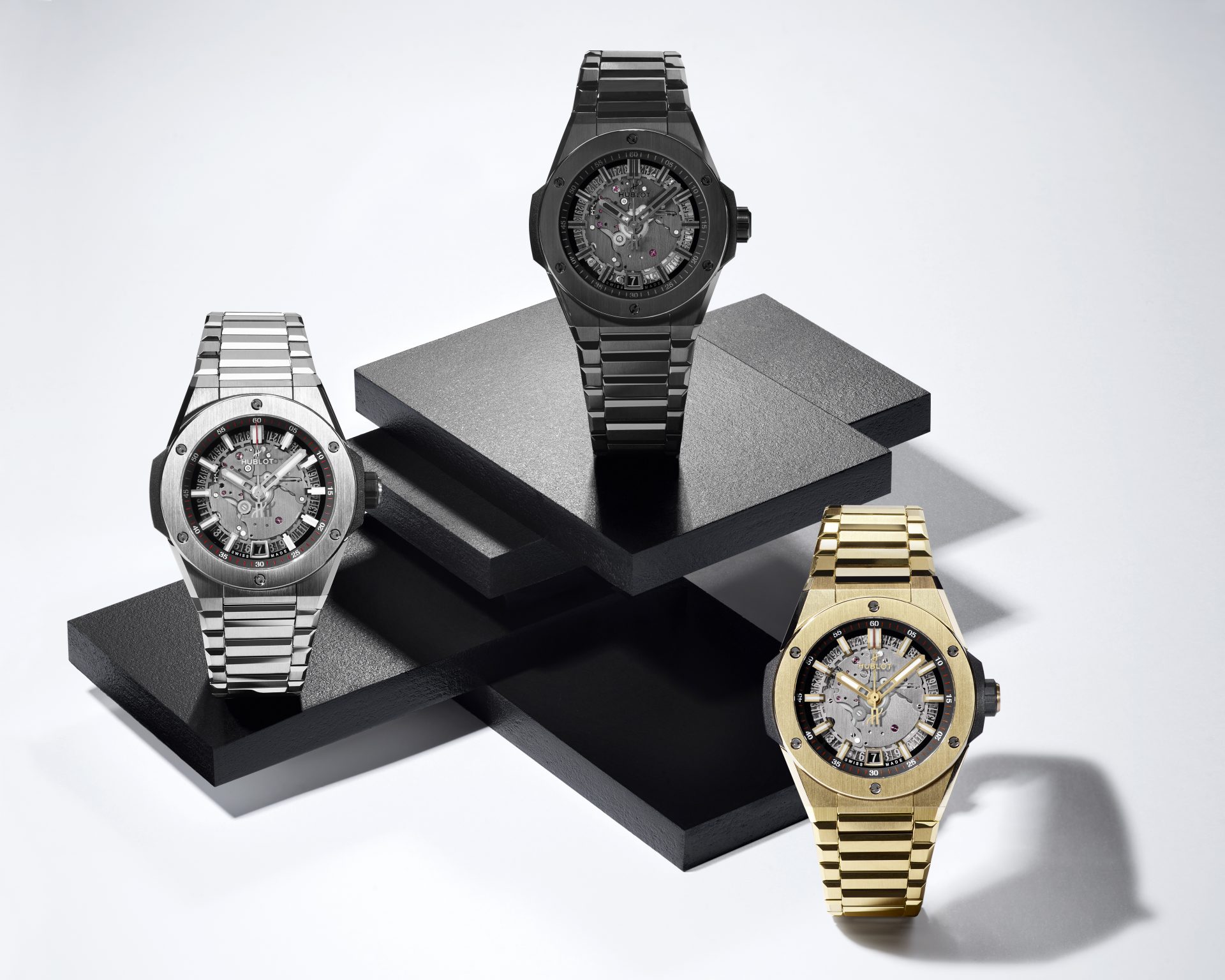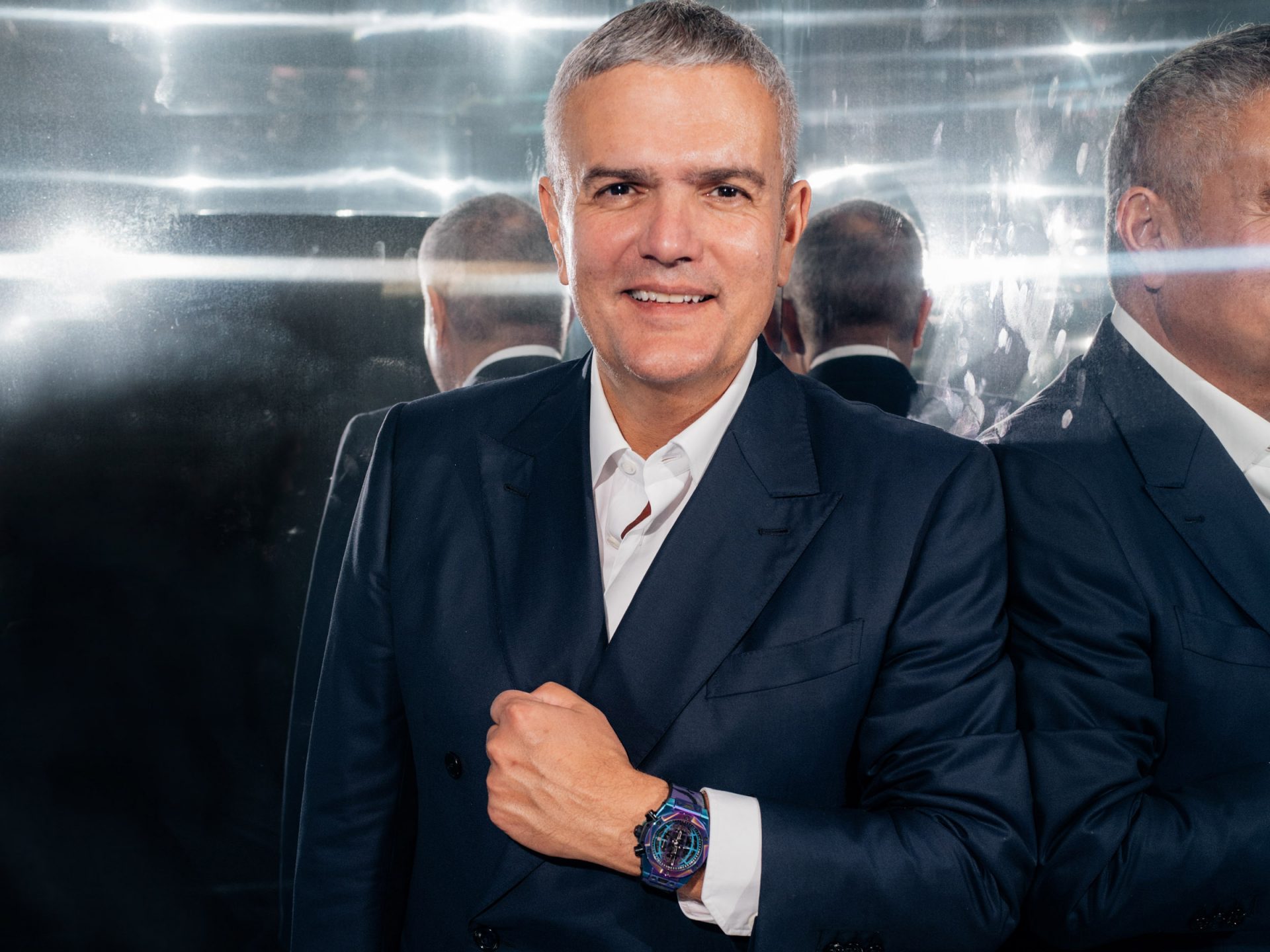Hublot sales dropped by around one third during the first year of the pandemic as city centre boutiques were forced to close and, even after reopening, punters failed to return because of travel bans and work from home orders. 2021 was a very different story and a record year, according to Hublot CEO Ricardo Guadalupe, and 2022 will be even better.
WATCHPRO: 2021 has been confirmed as an all-time record year for the Swiss watch industry with exports of over CHF 22 billion. That is a remarkable result in the second year of the pandemic.
RICARDO GUADALUPE: It is surprising when you consider where the industry was at the end of 2020. The rebound has been incredible, probably not for all the brands but most have had a great year.
We saw the release of the 2021 Swatch Group results with sales up 30% compared to the previous year.
Everybody had a great rebound and for us 2021 was even better than 2019, which is fantastic news.

WATCHPRO: LVMH breaks down its results so we can see the overall contribution from watches and jewellery, but not by individual brands, which is why I rely on annual figures, researched by Morgan Stanley and Vontobel, which are typically published in March.
RICARDO GUADALUPE: Yes, normally they are quite accurate.
WATCHPRO: That is useful to know you broadly accept the estimates from the investment bank reports. The Morgan Stanley report for 2019 had Hublot sales at CHF 640 million and for 2020 at CHF 445 million. Are you saying you will do better than the CHF 640 million from 2020?
RICARDO GUADALUPE: [No figures] but I can say we have done better than in 2019.
WATCHPRO: How do you explain the skyrocketing demand in 2021, particularly in the United States?
RICARDO GUADALUPE: America has been incredible. The pandemic is a health crisis, it is not an economic crisis. People that were wealthy before the pandemic are even wealthier now because the stock exchange is at record highs.
These people are keen to consume, but they are unable to travel, enjoy restaurants, etc, so luxury products like watches have become more desirable.
I would add that, specific to watches, there is a new generation of people who are keen to buy their first luxury timepiece. There was talk that these younger people would never be interested in mechanical watches, but we are seeing the opposite.
For example, we are seeing people involved in the cryptocurrency boom who are young and have generated fortunes in just a few years, they love luxury watches. I met a few guys recently in Miami, all in their 30s, and they are big buyers of watches.
There has been a few things coming together like the so-called revenge purchases and a new flow of consumers coming in that are really keen on luxury watches.
WATCHPRO: When you are talking about this younger generation, I wonder whether Apple did the more traditional Swiss watch industry a favour when its smartwatch launched in 2015. People who grew up telling the time from their phones suddenly got into the habit of wearing a wristwatch, and now some of them have become bitcoin billionaires, they are excited to move into prestigious mechanical timepieces.
RICARDO GUADALUPE: I fully agree. The Apple Watch was initially seen as a threat to our industry, and has been a challenge to the entry price segment, but we have found that people putting something on their wrist leads to them looking for something different down the line. A mechanical watch is a good answer.
WATCHPRO: You mentioned revenge spending on watches by people who have had fewer holidays and nights out to spend money on. But I would suggest this applies most to upper-middle income households feeling better off and they might only ever buy one luxury watch in their lifetimes. Do you think this sort of demand might soften as we get back to normal? More solid demand could come from the growing number of super-rich, who buy watches regularly and are amassing significant collections.
RICARDO GUADALUPE: I would say the trend is not over. It will take time to satisfy all consumers who want to buy luxury watches. You see this when you study the level of stock in the distribution networks.
There are some big brands — we do not need to name them — that have almost no stock. Hublot has low stock as well, so we need to produce enough watches to restore availability to a certain level.
Demand is still so high, and will not change from one month to another, so we are talking about two to three years to restore stock to the level we had in 2018 and 2019.
As you know, it takes time to increase production of mechanical watches — 18 months to two years to ramp up capacity — and that is the main challenge we will have this year as we are confident we have the demand to grow.
Our issue is producing enough of the watches to meet demand. It is OK for demand to exceed supply by a small amount, but the gap today is too big for us and other brands. It will take a few years to get that right.
WATCHPRO: It is interesting that external factors like the Apple Watch are having such a significant effect on demand for luxury watches. Another factor I would suggest is the growing sophistication, maturity and scale of the secondary market. Prices for many more models than five years’ ago are well above retail prices at authorised dealers and people are bragging about buying and selling these watches on their social media feeds so the stories are amplified and get everybody excited.
RICARDO GUADALUPE: Secondary market has become important, also because of the fact that people cannot buy the watches they want through authorised channels. If they want a specific watch, they have to go to the secondary market to find it, and they may buy it even though it is selling for two or three times the retail price.
At the end of the day we are talking about a few models, not the whole range of every brand. People talk the whole time about these few models.
At Hublot, we do have watches that are selling for over retail like the Sang Bleu limited edition, which is difficult to find.
Of course we monitor and verify what is happening on the secondary market, but the key is to make sure our watches are priced and valued correctly.
WATCHPRO: The entire Swiss watch industry is benefiting from supply and demand being much more closely matched right now so prices are more solid across brands and collections, and prestigious watches are being seen, at the very least, as a much safer store of value than a few years’ ago. People can buy with a lot more confidence from far more brands.
RICARDO GUADALUPE: That is right and very good for our industry. But again I would say we do not want this situation to go to an extreme.
When you have extremes, it has a negative effect. If you have watches that have waiting lists of several years, the desirability of those watches can be threatened at a certain point.
At this moment, demand is such that we have not been able to increase production to keep waiting lists manageable. It is going to take some time to resolve that.
WATCHPRO: Scarcity is a great asset in luxury, and that can come from overwhelming demand, or it can be manufactured by limiting supply. Hublot has moved heavily into making limited editions, often boutique-only, in small quantities. Is that a deliberate attempt to create scarcity or shortages that will support higher prices?
RICARDO GUADALUPE: Absolutely. This scarcity is good for the Hublot brand when it happens for specific models. Limited editions watches are talking pieces.
But 80% of our business comes from our core range of normal watches that we sell every day like the time only Classic Fusion, a Big Bang Unico or Original.
The other 20% of talking piece watches are about building the brand image of Hublot.

Most brands like to talk about iconic models, but it is core collection watches they are selling every day. For us, it is a strategy to have our own talking pieces because these help us to sell the core collection.
WATCHPRO: That strategy also supports another big trend for the Swiss watch industry, which is falling production volumes every year but rising average prices compensating. Lower volumes and rising prices is a dream scenario, isn’t it?
RICARDO GUADALUPE: Yes. We always want to increase the average price. The way we do this is to increase production by less than the increase in the value of sales so that our average price goes up.
There are two ways to do this. You build more value into the new watches we make, so you see this with us making more and more watches with our own movements and fewer entry level pieces. That means the mix has a higher value overall.
The other way we do it is by having our own distribution and retail. We have taken back control in places like Spain and Portugal and we will take back other markets in the future.
Controlling our own distribution is another way to increase our average revenue per watch.

WATCHPRO: Hublot has built a lot of its own retail, particularly in markets like China. That has given you a higher concentration than some of your rivals in key city centres that have been hollowed out by restrictions on travel and tourism, and work from home mandates. Does Hublot simply sit back and wait for the pandemic to be over and expect things to return to normal in these city centres, or do you have a strategy to rebalance and become less dependent on boutiques in places like Bond Street, 5th Avenue or Dubai Mall?
RICARDO GUADALUPE: If you take the example of China, we entered the market quite late compared to other Swiss watch brands, so we decided to go in direct with our own boutiques. We opened four boutiques [in China] last year and they are obviously in big cities. We are also seeing great success with ecommerce, particularly driven by social media platforms like WeChat. So, we have this great balance between digital and physical.
Physically, our boutiques are doing great and we have the potential to open more in China. I see around 50 cities that have the potential to support a boutique, so there is a lot of space to grow?
WATCHPRO: What about mature Western markets like Germany, Britain and America?
RICARDO GUADALUPE: Travel retail has impacted us in Western Europe, so we are waiting for the pandemic to be over so that travel returns. In the meantime, we are working more locally.
In Germany we have managed to improve that. In England, we have worked on expanding beyond our concentration in London and we have opened doors with our great partner Watches of Switzerland in different cities.
Every time we open points of sale, we do well.

